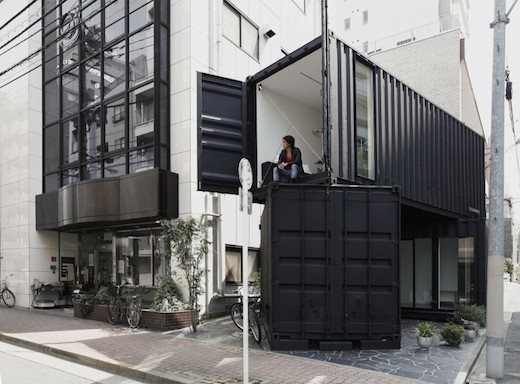When you shop for an item at any major ecommerce store today, the product will be shipped to you within a matter of days usually less than 3 days for local deliveries and a week for international deliveries. To ensure the contents are delivered undamaged, logistics companies use strong packaging materials. Unless the package is dropped accidentally, the contents will be delivered in their perfect condition.
That small box housing your electronic gadget, books, clothes, cookware and electrical supplies is what logistics companies use to protect and ensure faster shipping of your goods. Even the consumer side of shipping containers cause people to look at how they can get a used shipping container at lower cost. How about a large supply of goods that amounts to thousands of products?
Well, the answer is containerization. To better understand how containerization has impacted the transportation of goods globally, let’s delve into its brief history.
Brief history of containerization
As early as 1792, boxcars which were almost similar to modern containers were used on horse drawn transport and railroad to transport goods from one town to another in England. Fast forward a century and half later, the US government used an early form of shipping container (small standard sized containers) in World War II to transport weapons and other supplies to troops around the world. This proved to be a faster means of transportation and the efficient unloading of supplies.
It was not until 1955 when a trucking entrepreneur from North Carolina finally revolutionized modern shipping technology. The name Malcolm P.Mclean may not be that of a famous person in the world of science like the late Stephen Hawking but in the world of logistics and maritime shipping, he is revered for his contribution.
Malcolm P. McLean started by purchasing a steamship company. What drove him to purchase the steamship company was because of an idea he had formulated of transporting entire truck trailers together with their cargo. At the time, he thought the idea would ensure the simpler and quicker transportation of products until he came up with the idea of a single container that could be loaded and unloaded from a ship onto a vehicle without the need of unloading its contents.
You may be asking yourself what he based his idea of a shipping container on. Well, it’s referred to as the system of intermodalism. The system is based on the idea that a single container can be used to transport the same cargo on land and water with minimal interruption during its journey. Basically, the shipping container will be packed, loaded onto a vehicle, shipped to the port, loaded onto a ship, transported to another international port, unloaded onto a vehicle which then transports the container to its final destination. Here, it’s opened and the contents are unloaded for further distribution to stores and homes.
The Birth of Intermodalism
After Malcolm P. McLean conceived the idea of intermodalism as briefly described earlier, he went ahead to sell his trucking business and took a bank loan for $42 million in 1955. $7 million from the loan was used to purchase an established shipping company called Pan Atlantic Steamship Company. The company had already acquired docking rights in majority of the Eastern port cities thus the reason for the purchase.
After acquiring the company, he renamed it to SeaLand industries. He started testing different container models and finally chose a certain model which today is considered the model shipping container. The selected model was built to be strong, stackable, easy to load, easy to unload and easy to secure. Now that he had realized his dream of a standard shipping container, he sought the final piece of the puzzle.
He purchased an oil tanker which he went ahead to modify so that it could hold 58 shipping containers of his design together with 15,000 tons of petroleum. The oil tanker set sail on April 26th 1956 from New Jersey to Houston.
Thanks to his ingenious idea, he was taking shipping orders even before the maiden voyage was complete. The new orders required him to load goods in Houston and transport them back to New Jersey. To encourage more cargo owners to adopt his intermodalism idea, he offered them a 25% discount. This encouraged cargo owners to adopt the new shipping model since their cargo was securely stored in lockable containers unlike before.
How Shipping Container Technology Changed The Logistics Industry
1. Lowered transportation cost
In the 1950s before McLean came up with the idea of containerization which has changed the shipping technology, cargo owners used a different form of method to ship cargo. As a result, cargo owners were charged $5.86 per ton which translates to $60.54 in 2018. (Today, it costs less than $0.20 per ton). Due to this, freight charges amounted to 25% of the product cost which resulted in international trading not being beneficial. In addition, the cost of packaging amounted to 20% of the retail price.
As you can see, the biggest expense incurred on shipping back then was the transportation of goods from the factory to the ship, from the ship to the port, from the port to the distribution center and finally to the customer. This made the shipping cost before containerization very unpredictable. Basically, there was no precision linking between the producer and the importer.
Thanks to containerization, the logistics industry has experienced reduced transportation costs. This has come about as a result of the elimination and reduction of handling expenses such as:
- l Longshore labor
- l Pier rental
- l Insurance
Thanks to containerization, now US corporations can have their goods manufactured in other countries and have them delivered at a lower cost compared to the manufacture of the good in the US. This has enhanced low prices of goods for customers across the globe and improved living standards.
2. Helped to create a reliable and efficient distribution channels
Ecommerce and shipping technology have revolutionized the way people shop for products. In the past, a local store had to import products from the manufacturer in order to make the product available locally. This was mired by a lot of issues. For instance, local stores incurred higher charges of importing the goods. To ensure that they earned a substantial amount of profit to cover their different costs, the product was priced highly. As a result, it became unaffordable to many people. The few who could afford such products meant majority of the products remained on the shelves for a long time before the retailer finally lowered the price and sold them at a loss.
Thanks to containerization, today local stores can order goods from China, US or Europe and have them delivered within less than a month or two. Since the handling charges plus taxes charged by their respective government are minimal for a container, a local store owner is able to sell the products at an affordable price. As a result, he or she is able to attract a large number of customers which in turn earns him or her revenue which is used to settle different expenses as well as ordering a new shipment.
How was this achieved? Well, containerization created reliable and efficient distribution channels not only with manufacturers abroad but with customers too. The increasing numbers of established MNEs have influenced the efficiency of distribution channels. Thanks to improved packaging reduction for containers, it has reduced the cubic size and weight resulting in lower freight costs. This means containerization has brought more advantages to logistics than earlier forms of shipping methods.
3. Improved loading and unloading time
Before McLean’s intermodalism idea, loading and unloading of cargo was done in wooden crates, barrels and sacks. This process was referred to as the Break Bulk shipping method. The method was labor intensive which means many people had to be employed as loaders to load and unload cargo. Back then, the large container cranes which are a common feature in major ports around the world today were nonexistent. Due to this method, ships had to spend more time at the port than at sea. As a result, delivery time of goods to cargo owners was delayed.
In addition, there was the high risk of loss and accidents. According to research, it could take more than a week to fully load and unload each ship. The cargo back then cannot be compared to what modern shipping containers are able to handle today. For instance some of the largest container ships in the world such as OOCL Hong Kong, OOCL Germany, OOCL Japan and OOCL United Kingdom have a maximum TEU of 21, 413 and a gross tonnage of 210, 890. To explain how massive these ships are, the number TEU (21, 143) expresses the maximum threshold of 20 feet containers the ship is able to carry.
If you compare this with the ships available pre-1956, the amount cargo is much less. When you factor in the use of container cranes, loading and unloading times have reduced significantly especially in terms of cargo size.
4. Improved tracking capabilities
Before even containerization was a reality, cargo owners and shipping management did not have an efficient tracking system. On land especially where boxcars and trains were used, cargo owners had to wait at the terminal port for confirmation that their cargo had arrived. While on transit, it was difficult to know if the cargo was safe and where it was at a certain time of the day.
When it came to shipping by sea, only the shipping manifest confirmed that a certain type and quantity of goods were loaded into the ship and they were headed to a particular port. Without a tracking system, it was difficult to know where the ship was at sea. Probably they used marine radar but there is no evidence of that.
After the introduction of containerization, cargo owners discovered how cheaper it was to transport raw materials and finished goods from one port to another. Thanks to containers, goods were safely secured since the container was lockable.
Advancement in technology led to the development of tracking systems. These systems were incorporated in the shipping/logistics industry. Today, manufacturers and cargo owners can track ships along shipping lines in real time. When using a vehicle, cargo owners can also track their containers in real time too. Apart from that, the system comes with the ability of calculating the costs and optimization of the shipping process.
Want to know how the tracking system works?
Well, it works by exchanging data with other Automatic Identification Systems close by such as satellites, ships and bases.
Final Thoughts
The present day shipping and logistics industry can be said to be truly global. Not only has it touched our lives in more ways than we ever imagined but it has been a major driver of globalization from the second industrialization to the third and now into the fourth (Industry 4.0). Today, an entire industry that consists of shipping vessels, port terminals, containers, tracking systems and technology has come up to efficiently manage the complexities of logistics. This has helped to further the growth of global trade.














Be First to Comment